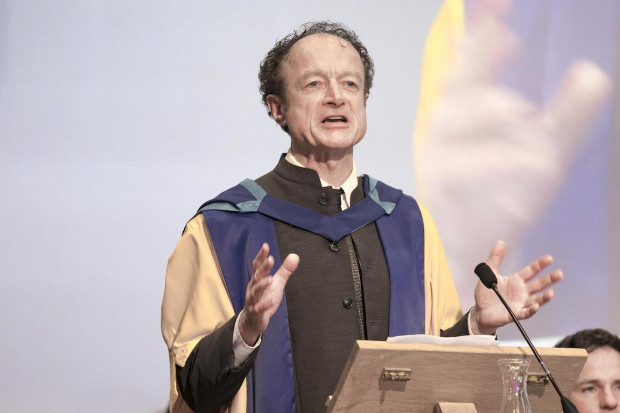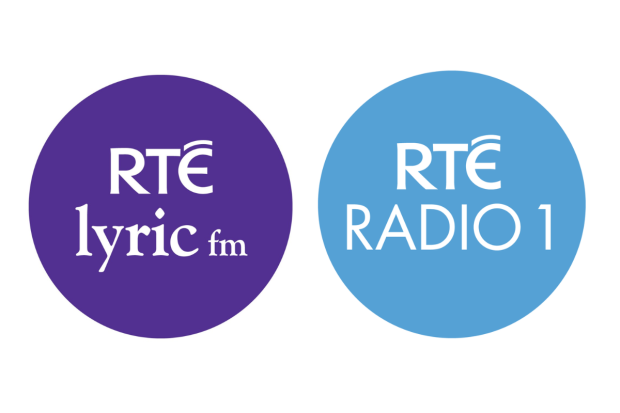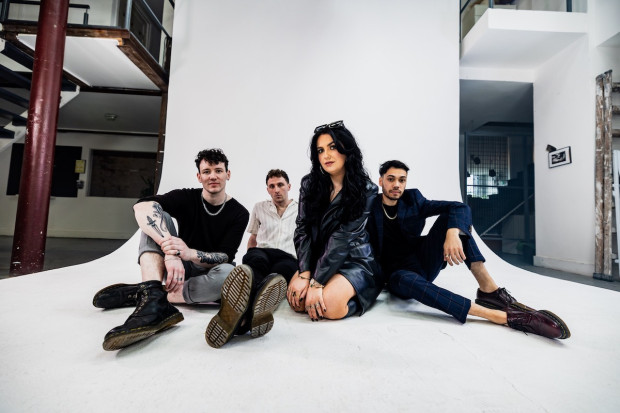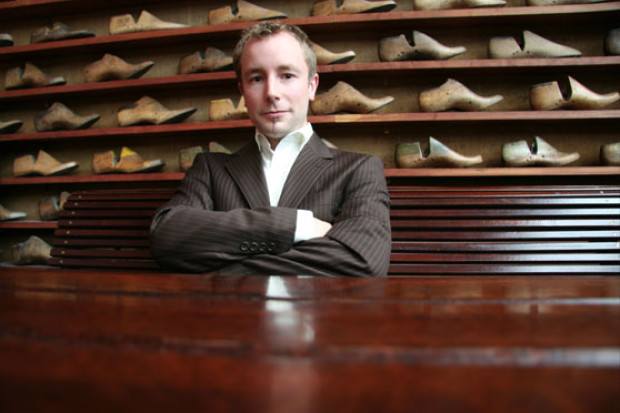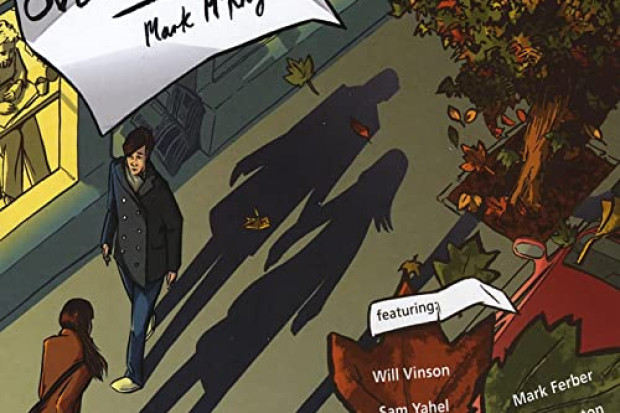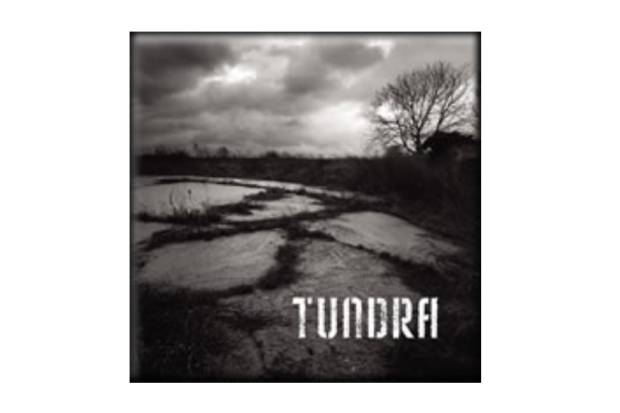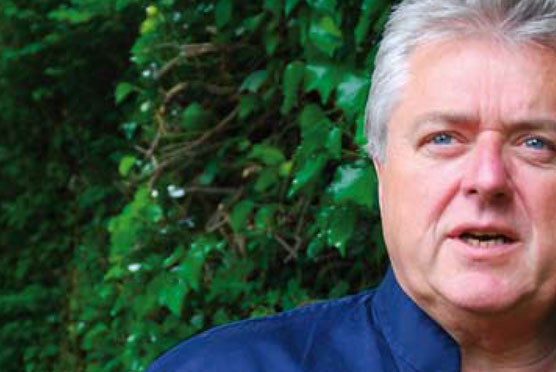
Composer Bill Whelan
Ireland's Dance with Music – Interview with Riverdance composer Bill Whelan
In April 1994, the seven-minute performance of Riverdance, combining the music of Bill Whelan with a reinterpretation of traditional Irish dance, had an immediate and remarkable impact on the Irish public. Shining a new, international spotlight on Ireland and Irish culture at a time of great economic, political and cultural change, Riverdance became a symbol of a new national self-image and an essential part of the narrative of fin-de-siècle Ireland. Immediately reaching number one in the Irish charts, and entering the top ten in the UK, the performance was subsequently developed into a full-length show which has been performed on every continent to extraordinary acclaim.
Prior to Riverdance, Bill Whelan was responsible for producing hundreds of recordings by Irish and international artists, including U2 and Kate Bush, was a member of the group Planxty, and had written major works for traditional music soloists and orchestra such as The Seville Suite and The Spirit of Mayo. In the years since he has continued to write and produce, was awarded a Grammy in 1997 for the music to Riverdance, received two lifetime achievement awards from IMRO and the Meteor Music Awards, has recently been commissioned by the Metropolitian Opera in New York, and in December 2007 released a CD of new work, The Connemara Suite.
In this interview, Toner Quinn, Editor of JMI, talks to Bill Whelan about his musical background in Limerick, his diverse career in music, the success of Riverdance, his passion for music education, and how the Irish celebrate themselves.
Toner Quinn: You have recently released The Connemara Suite, a suite of three pieces for orchestra and soloists. It is the first CD of your own work since Riverdance, apart from film music, and it is tied in with the geography of Connemara where you now live. How important has Connemara become as a place where you can work?
Bill Whelan: It’s a very interesting question, particularly relative to The Connemara Suite, because of the three pieces two of them were not written here. Both Errisbeg and Carna were written in Paris. To the point of your question, Connemara is very important. I have been coming here since 1984, when I wrote the music for the film Lamb with Van Morrison. In 1997 we bought a house in Connemara and I built a studio here. I suppose in as much as a nomad like me can say this is where I come from, Connemara is our home. In a curious way it was very inspirational to write about Connemara from Paris. It kind of pushes your imagination a little bit more rather than just sitting looking at it out the window.
TQ: In Inislacken, the first part of the suite, there is a passage which is particularly characteristic of your work, in that it crosses two traditions, when fiddle-player Zoë Conway plays in a traditional style and the classical violinist Fionnuala Hunt partners her. At that moment, when you are writing for two solo violinists from two different traditions, what are your considerations?
BW: At a moment like that in particular you have to lean towards the Irish tradition and expect everybody else to get in line. I would be inclined to let the tradition, or my sense of the tradition, lead, and then try and tuck the rest in behind it, rather than write something very smart that pulls bits out of the tradition but doesn’t seem when you listen to it to be anything more than a nod towards it.
Zoë Conway came to me in a roundabout kind of way. My son was playing with a band in Lorient. When he came back he said I had to hear this young fiddle-player. That started a musical relationship that led to both me producing her solo album and also to all of The Connemara Suite, which was written in some way with her in mind. The thing about Zoë is that she is such a well-schooled musician you can virtually write anything for her. She reads perfectly, and yet because she has been going to the Willy Clancy Summer School and all points north, south, east and west of it for a long time, she is steeped in the tradition. You write a melody for her, and, as long as you are careful with it, as soon as she plays it, she validates it in some way.
TQ: You have also recently been commissioned by the Metropolitian Opera in New York. Could you tell me more about that?
BW: When Peter Gelb took over at the Met a couple of years ago, he came up with an idea to try to stimulate some new writing and commissioned people like Wynton Marsalis, Rufus Wainwright and myself. At the moment the poet Paul Muldoon and I are writing together. The sense of the commission is to try to stimulate writers who are perhaps not normally associated with opera, to do something that would deliver some new works into the field. It is a commission by the Met and the Lincoln Centre for the Performing Arts working together. The Lincoln Centre will workshop it and we will then decide whether it is appropriately positioned in either the Met or the Lincoln Centre. The actual performance date has yet to be decided.
TQ: Could you tell me about your background as a composer and musician?
BW: My earliest musical memories involve percussion. My father played harmonica and I can remember sitting on the floor at home with two knives on a Callard & Bowser’s tin – I can still see it – and playing percussive accompaniments to my father’s harmonica playing. That would be my first musical memory, and it is followed on by attendances at rehearsals of the Limerick Pipe Band where I sat lovingly beside the drummers. I was at a gig in Berkeley recently and got into a long discussion with drummers about drumming, and it has been central to my music. I always had rhythm – rhythmic music was always very much to the fore of my early consciousness. That was to change, but it was elemental for me.
My father was a very important influence on me, particularly when I think back to what came into the house courtesy of my father’s musical curiosity. Growing up in Limerick in the 1950s, few of my contemporaries were listening to Jussi Björling, Duke Ellington, Johnny Hodges, Thelonious Monk, Art Blakey, Bill Haley, Con Foley and the Clancy Brothers. He was bringing all this into the house. We had an extraordinary record collection.
I was an only child, we never had a car, and I grew up with a father who was passionate about music, photography and film-making. We had a 16mm film camera and he built a tiny cinema in our house, a small, terraced, red-bricked house in Barrington Street, Limerick. We had a Bell & Howell projector and he and his pal broke holes in the wall, to my mother’s horror, and built a little projection box. He shot several home movies. He would have been joining film clubs in the UK and swapping films with fellow enthusiasts in Limerick. My mother also had a passion for music: she was a classical pianist, and actually could have had a career in music. A musical evening in our house would have been a bit of my father’s harmonica playing and then a bit of Chopin and ‘Home! Sweet Home!’ with variations.
TQ: Were there many musical evenings?
BW: Yes, quite a few, when relations would come by or friends. My parents were slightly reserved, so it wasn’t a room full of people. But there would be five or six people, and one or two would play the piano. Neither of my parents drank, so it wasn’t a drinky, smoky, piano thing; it was just for music.
There was always a good piano in the house. In fact we had a Bechstein. I don’t know where my parents used to get the money sometimes. Unlike my mother, my father was somewhat cavalier in money-matters. He would go and buy things and then take the consequences later. There was a lot of items bought by hire-purchase. He was the kind of man who liked quality items, but then, we never had a holiday, because we had a newsagent’s. We opened every day of the year except Christmas Day. Even on St Stephen’s Day we opened because the racing papers came in.
TQ: At what age did you go to music lessons?
BW: I was probably about 8. I had private piano tuition. There was no music programme in our school, and that’s something that has become a passion of mine in later life: music education. I later went to the Limerick School of Music and had violin and piano lessons there, at 15. The violin had a very short career. Generally speaking I wasn’t a very good music student. I was always doing my own thing. My father, because he wasn’t trained, would come in and he would ask me what I learned yesterday, and I would sit down and play whatever came into my head. They were probably my earliest compositions. I had nothing to play him, so I would just play around a set of chords and improvise a little bit of melody. And he would say, that sounds nice. I think he knew quite well what was going on frankly, but he was encouraging.
When I was in my mid teens, I developed an enormous interest in recording. I had convinced my father to buy a Vortexion tape recorder. Myself and a few pals, fellow music enthusiasts, who I was in bands with, started a studio in the attic of my house in Limerick. My father and I built a little control room, and we put in the Vortexion. We actually recorded a record there, released by a group called the Shannon Folk Four from Killaloe, around 1967.
I had started to write pieces of music at this stage. I sent a friend in England a demo of one of the pieces I had written, an instrumental piece for flute and piano, and it ended up being the theme music for a Richard Harris film. He brought it into Richard Harris’ publishing company and, after a week or so, rang them up and he said, did you listen to that tape. They said no, and he said, well I am coming over to pick it up anyway, because we have got a big offer from RCA.
TQ: Which you didn’t.
BW: No. It was bullshit. When he got over to the office to pick up the tape they had listened to it and they said it would be an ideal piece for Richard’s new film. Harris fell in love with it and it ended up being the theme music. So I went from Barrington Street, Limerick, with my Vortexion tape recorder, to being flown to London to go to the recording studio with Harris and going to these parties in London with people like Christine Keeler and the Bee Gees. I had never even been on an aeroplane before. It was an enormous break for me personally. Of course, I thought that after that everything was now in place, it would be easy from here. It wasn’t. I was quickly back to reality when the film flopped.
I had finished school, but I didn’t know where to go. I wanted to be in music. I was clearly besotted by it, playing in bands, with a recording studio. It was my life, but I couldn’t find a route. And for all of my father’s passion for music and my mother’s love of it as a player, and all the music I grew up listening to, they still couldn’t see it as a sensible route for me as a young man. So they said, well, what are you going to do? I suppose I could have done a B. Mus. At the time that seemed to me to be a quick track to teaching music. It seemed musty, and to a guy in the sixties who had already met Christine Keeler it didn’t seem like the right route. And there was the parallel universe of the sensible world going on as well. The sensible world was saying, you are going to have to get a job and you are going to have to be employable. I ended up signing on as a student in UCD in 1968 for a law degree.
I turned out to be somewhat unfocused as a law student, because I was busy going back to Limerick every week, making demos, writing songs, trying to get into bands, and turning up at places like Trend Studios and standing at the door expectantly, waiting for them to open the door and say, oh yes, we have been waiting for you!
TQ: Which songwriters influenced you?
BW: Inspiring for me would obviously have been the Beatles. I was really getting into American music – Paul Simon and Joni Mitchell – and I had a curious group of friends in Limerick, who seemed to be able to ferret out extraordinary things: people like Curtis Mayfield, Frank Zappa, The Mothers of Invention.
We would have these sessions after school where we would sit and listen to, for example, Sgt. Pepper’s Lonely Hearts Club Band non-stop for hours and hours, and talk about the tracks – hang on, play that, stop it there, go back, do you hear that, what’s that, that’s a harpsichord, is it? – major analysis. It was like a version of a seisiún except the musician in the room was plugged into the wall. I remember discovering vocal harmonies at the time. It was a really important time.
I wonder how much of that happens now. I think that there is probably now some expectation that music comes out of the ether, because everybody has it everywhere. People have more on their iPod now than people used to have in an entire lifetime of collecting music. Of that a very small percentage is actually played more than once. This is not a pessimist’s view, I just think it’s in flux. We are going to realise as a culture that something very important happens when people sit together and listen to music. Something happens that unites people’s cognitive processes.
TQ: While in Dublin you joined a burgeoning community of musicians in Dublin, working as a session piano player and producer. Can you tell me about those early years?
BW: I had started off by getting a publishing offer from Polygram for the songs that I had been writing in Limerick. They gave me some money to do some demos. The musicians who played on them were Des Moore, Dessie Reynolds, John Drummond, Louis Stewart and Tommy Halferty. Tommy and I shared a flat for a while in Dublin. We used to play sessions together in the Pembroke. We would go down with a vocal group and flute and do Beatle covers.
I had a certain pianistic style, using interesting chords, and I was a pretty solid rhythmic player on a recording session. Gradually I began to get work in that area. I was playing in a jazz group with Mike Nolan and Keith Donald and a few others and I was learning to write charts for the band. Then RTÉ started to employ freelance session players. Noel Pearson reckoned that I was good enough to be a Music Director, putting together the session, writing the charts, booking the musicians. Gradually I began to extend my capabilities, arranging and writing.
RTÉ can’t be discounted in any way for their importance at this point, not just to me but to others. It was hiring a whole bunch of different musical talents, arranging talents, orchestrating talents, production talents. And people were learning. I was one of that group of musicians that came to do a job. I learned so much. I remember going in one day and I wrote a very soft arrangement for piano, harp, strings and brass, and I wrote the entire brass part up the octave. So when the brass entered there were these scarlet faces – not to mention my own! I remember Noel Kelehan, with his characteristic pencil in his mouth –?he always had the arranger beside him as he conducted the piece for the first time – he took the pencil out of his mouth and turned to me and said, ‘I think we meant that down the octave, Dad.’ Moments like that were better than any classroom anywhere.
I eventually moved into the area of record production. I admired producers, people like George Martin and Bones Howe. I began to think about the often unseen hand of the producer. A nice shape to the arrangement. A proper use of dynamics and chords, things that you file under the general area of ‘taste’. That attracted me. I knew that I had a certain amount of social skills in the studio. I didn’t lose it. I didn’t slam the door. I kept things cool. I saw the role of the producer as somebody who creates a safe environment where the individual musician can feel free to be as expressive as possible.
There are certain things you realise about players when you are working with them. There is no point in asking a rugby forward to do some ballet. You are trying to make them feel safe about expressing themselves. I remember there was a famous producer around Dublin: he used to press the talkback button and say to the musicians, ‘OK, impress me!’ Lovely!
We now see that in the likes of Simon Cowell, who, frankly, I would think has less right to be in the position of saying yes or no to people’s careers. This new trend where we enter into some kind of Roman amphitheatre and watch people debase themselves in front of us, and then we have gladiators who ultimately kill them in front of us – it’s just awful. It’s completely contrary to what music should be about. Maybe what star-making is about, but not music.
I remember doing an album with a guy called Raphael Ravenscroft, the sax player on Gerry Rafferty’s ‘Baker Street’. He brought musicians from Chicago and Detroit into Dublin. I was producing and playing piano, and used to just float home every evening after the sessions. It was just the feeling of playing together, of ideas bouncing around the studio that was unique to each session, and I miss that out of my life now. That said, a lot of what we did was meat and potatoes stuff. We turned up at 10 o’clock in the morning at Trend Studios, we played til one, we broke til 2.30, and went back and played til 5.30. Occasionally you hit something special.
I have very often been surprised and delighted by things that happen in the studio. East Wind, an album of Eastern European and Irish music by Andy Irvine and Davy Spillane, which I produced, is a memorable example for me. When Mícheál Ó Súilleabháin came in to play piano, and Nikola Parov came in and played the gadulka, no payment could match the enjoyment you took from it.
The essentially solitary exercise of composition, followed by the panic and horror of the first performances, will never compensate for those moments of sheer absolute relaxation and elation out of playing with other musicians.
TQ: Were you interested in traditional music before your days with the group Planxty in the early 1980s?
BW: I was, yes, and going to concerts. I had written the music for a television series called The Age of de Valera and had used Liam O’Flynn on pipes. Startlingly, I had also found myself writing a piece called The Brendan Voyage. I had researched it from listening to music from Ireland, the Hebrides, the Faroes, Iceland and Newfoundland, and I was constructing a piece that would follow Tim Severin. I will never forget the day Brian Masterson said to me, ‘Bill, I just wanted you to know I think Shaun Davey is pretty far advanced on a thing called The Brendan Voyage’!
I was asked to do a television series called My Ireland. And whatever way my own head was being drawn towards traditional music at the time I said to Ian McGarry, ‘I think we should use some proper trad. players.’ I rang Dónal Lunny and that was the start. I remember going up to meet Dónal on a Sunday morning in Glasnevin. We became very connected musically. Timedance was where Dónal and I were really reading off the same page.
TQ: But before Timedance there was The Woman I Loved So Well, Planxty’s 1980 album on which you played keyboards. Can you recall those sessions?
BW: Very much. It was difficult for me. I was a young musician. I wasn’t coming in with a big body of work or a career. But when we sat to play together for the first time, I loved what they were doing and I felt that we were communicating, certainly Dónal, Andy [Irvine] and I. Liam [O’Flynn] was a bit more remote. I think Christy [Moore] was quite impatient with some of the stuff that was going on actually.
I was very nervous during those sessions. I still remember the kind of welcome that I got, the feeling that they were going to sit and let me get on with what I did, come up with some chords that would sit with the tunes, maybe a little line on the keyboard that worked with whatever else that was going on. There was a patience there. It was the same thing that I hope I engendered as a record producer.
TQ: Coming into contact with traditional music, was that important for you from the point of view of your identity?
BW: Yes, absolutely. I was now feeling as if I was heading towards a voice for myself that made sense to me as an Irishman. Here was the area that I was going to find it in, as opposed to trying to write another Carole King song or something.
TQ: Were you a fully fledged member of Planxty?
BW: Well that’s difficult to say. I was a voting member of the band, as was Nollaig Casey. We were a six-piece for two years, then Planxty broke up. Did I ever feel as if I was part of Planxty? I don’t think that anyone was ever part of Planxty other than Dónal, Andy, Christy and Liam. When they reunited recently, they, I think correctly, did a series of concerts with just the four of them. In essence, it was always the four of them.
TQ: Can you tell me about the background to Timedance, the interval music to the 1981 Eurovision Song Contest?
BW: This came out of a commission to me by Ian McGarry to write a piece of music for the centre of Eurovision. I was with Planxty at the time and I went to Dónal and said I would love to do it with Planxty. Liam insisted that the first opening section would be a traditional tune, which it was. I had written the central piece, and then Dónal wrote the Ballymun Regatta, and then he and I worked on the arrangement for that and I did the keyboard and the orchestral arrangement. I was very proud of it. Ian McGarry brought in a lady called Eilish McCourtney-Baldwin to do the dance for it, and it was very balletic, contemporary dance. I suppose, looking back on it, it was probably right for the occasion, but in other ways, something more rooted in traditional dance would have worked better –?as we were subsequently to discover!
TQ: You mentioned in a talk you gave recently in UCD that you trace the confidence in the Irish music industry today to innovations such as the founding of Windmill Lane in the 1970s, saying it was to ‘to change our perceptions of ourselves as musicians and our possibilities on the world stage.’ Could you expand on that?
BW: I do think it was a very important time. From a recording perspective, U2 was reversing the tide which had given everything away to the UK. They made their albums in Ireland , and there was now the state-of-the-art building of Windmill Lane. Suddenly you had a recording studio in this funky dockland area. Not alone did it house U2, but you had people coming in from advertising who were making television commercials and they needed music. They would go down and see who was around and suddenly you were working with them. There was a great sense of community and a sense that we were making music and pictures which were as good as anywhere else. Windmill Lane was a very important place for me and for so many of those who were around – U2 and the Hothouse Flowers, for example. Then we started to see the international acts coming in, people like Steve Winwood and Kate Bush.
TQ: You have stated that there was a confidence there which was new.
BW: It was not something you spoke about in so many words, but we felt it. It came from Paul McGuinness, it came from James Morris [a founder of Windmill Lane], it came from all of us I suppose, that instead of going to England, everyone said hang on, what have we got here? It reached right across the board. Why did U2 choose a team of Cork men to do the sound? Because they could do it. U2’s success was validating.
But there was still some blockage. Sometime in the 1980s I went to Córas Tráchtála [the Irish exports board]. I said that the only thing that separates Irish music from acceptance on the world stage is a conduit to get the music out there, that if we were to open an office in New York and put a man in there, they could take Irish music and disseminate it around the record companies in New York and be the contact point. It just didn’t resonate for them then. It was, ‘Ah sure, we’re Irish.’
In London in the 70s, I trekked around with my songs to publishing companies – even getting in the door was a big problem. In the 1980s, post U2 and post Windmill Lane, we were beating them away. Even though I was still to go through some darker days, I can date all of the confidence in Irish music today to what was built in those early days.
TQ: And what were those darker days?
BW: Being broke. The industry becoming static. It wasn’t growing. The 80s was a bad time in Ireland generally. The banks were putting everybody under pressure and I was really at a loss to know what to do. In 1984 I went to America with my family. We swapped our house and I went to New York and spent a very depressing summer there. In Ireland, it seemed to me that even though I was working every day, every hour that I was given, I was getting poorer. I now had four children and things were looking grim. I had produced an album by Freddie White and one by Those Nervous Animals and a couple of other things and I thought, I am going to go to America and just see if I can find somebody to connect with there. Paul McGuinness very kindly gave me a number of letters of introduction to people in the record industry in America, but I went in July or August and a lot of people were away. I just hung around.
I came back from America very broke. I found it very difficult to see a way through. I was trying to get people to see what I was doing, when really what I did much later was far more important, which was to become focused as a composer. I came into the business because I wanted to write. Instead of playing records that I had produced, I should have been playing music by Bill Whelan! In a similar display of lack of focus, I formed Irish Film Orchestras, not particularly because I was a great patriot and wanted to help Irish music, but because I wanted to write film music – the utter absurdity of expecting people coming in to see the guy who put the orchestra together for them, and to suddenly go, now Bill, now that you have put the orchestra together, would you write the next score! It sounds completely insane. In fact it took an American who I connected with in 1989, Jim Flannery, at the Yeats Festival in the Abbey, to actually say to me: you can write, come into the Festival and write music for Yeats’ plays.
TQ: Had he heard your music?
BW: I think I played him a few things that I had written. He just took a leap of faith with me. I was very lucky. As it happens he was American, he wasn’t Irish.
TQ: Is that significant?
BW: It probably is. If there is one thing that we have a problem with in this country, it’s that we don’t celebrate ourselves terribly well. Americans are great at it. If you are successful they want you to be more successful. If you fail you can have another shot in America. If you fail here, we are not so forgiving.
I think we celebrate a notion of Irishness. But the practical celebration is turning our acknowledgement of ourselves, our belief in ourselves, into practical use. I often think of the Irish language for instance. I grew up with the Irish language being celebrated. If you look anywhere in the country the Irish language is the first national language. But I managed to go from age four to age eighteen and come out at the end of it not speaking Irish. There is something wrong there. We are a little bit too good at lip service, and we sometimes mistakenly imagine that that is all that is required.
What do we do for instance at the level of government to really stimulate music and musicianship in Ireland? What do we do in terms of the education system here? I was in the Bronx recently, and there is a girl in a school there who has been working with Irish kids. She wanted 59 violins for the school. She got them immediately. We love to see ourselves as a musical country – Ireland is a great musical country – but what have we done about it?
I think it is something to do with the age of the state. If we were a long established monarchy for instance, we would probably have slightly different systems in place. I think it’s also partly because of where it is on the agenda of the state coffers. We wonder what the return might be. We might see a couple of big things come in from this or that music or film venture, but we mightn’t see it as being as valuable as major job creation. The Celtic Tiger world sees itself as stimulating the economy, but I don’t see it stimulating the culture. We may not see 200 jobs as a result of an investment in culture, but we may see a better community.
It’s not as easy for kids to get a good music education as we think it is. For a country that sees itself as a great country of musicians and singers and dancers we have to realise that our musical culture is being kept alive simply by the passion of those who perform it and who hand it down, by Comhaltas and other organisations that look after it. But at the level of state, when I look at what is available in America or in Russia or other societies to keep orchestras going, to educate young people, we need to do some work here. We need money, resources and education. It’s easy to see the tree. You have to be able to see the seed.
TQ: In 2003, you were conferred with a Doctor of Letters from the University of Limerick. In the citation regarding your work, it read that the performance ofRiverdance in 1994 was ‘in no doubt the epiphanal moment of modern Irish history, capturing the confidence of a resurgent nation redefining itself through a communion of past, present and potential’. What do you think of that reading of Riverdance?
BW: I would be dishonouring it to say that something wasn’t evident on the night of Riverdance, that here was a piece of music and dance which resonated with Irish people. It was Irish musicians, Irish dancers, and an Irish composer, putting on a piece of entertainment that connected to Ireland in a new way.
I see myself has having been involved at a very good time in the development of Irish music. Planxty and Windmill Lane were very important to me in that growth. Dance was somewhere else. It was in the area of competition culture, but there was a great technical dance tradition being kept alive and evolving there. What Riverdance did, to me, in terms of a piece of theatre and music, was that it brought those two developments together.
Now where I start to get vertigo is where we start seeing this as some great moment in Irish history. I don’t know whether that is true or not. I don’t know for instance how real the Celtic Tiger is at the end of the day. I think most of us are very happy that we seem to be much better off now, and it was gratifying to see Bertie Ahern address the joint houses of Congress in the States in the way he did. In North America at the time of the Peace Process, people like Gerry Adams, Garry McMichael and David Ervine were all turning up at Riverdance. It was a great time. To see it as somehow being part of the engineering of this, as part of some grand plan or something, that’s where it all goes awry as far as I am concerned.
TQ: What do you recall about the first performance of Riverdance in 1994, when it was the interval act of the Eurovision Song Contest in Dublin?
BW: Certainly the excitement was massive. There was a tremendous sense of calm to Moya Doherty’s production of the whole Eurovision that night, even though we were putting on an enormously complex television production. I will always think that that came from her. At the time I was thinking, we had to get as far as the finishing line. That’s what we had to get to. So up to then it was just terror. I remember sitting in the hall on the night and just praying that we were going to get to the end.
TQ: Were you backstage?
BW: No, we had all come out for it. I remember sitting just looking at the security guys and Riverdance was going on behind them. They were almost as disconnected from it as, in a way, I was myself. I wanted it to happen as we had seen it in rehearsal. I wanted it to be over and that nobody would fall, that everything would work. It was truly live, and had a lot of potential for error, but it went so smoothly. When we got to the other end I looked around the hall and people were standing up and waving flags. I could see the President standing up and I thought this is just extraordinary. Something really important had happened for all of us.
It was just chaos for a long time after that. In the immediate post Riverdance I was happy that I had a record, and suddenly it was in the charts at number one. Then there was the whole business of getting together to write the show. I knew I wanted to write something that would come out of where we had been going with Riverdance, and yet I knew I had a very short time to do it in. I didn’t believe that a whole evening of Irish dance would sustain theatrically. I felt we had to mix it a bit. The fact that I had worked on East Wind and with Spanish music – all of those things became signposts for what was to be Riverdance: The Show.
But it’s always the melody that begins and ends it. For Riverdance, and all the music that came out of that, I spent a lot of time on melodic construction.
TQ: The impact Riverdance had on traditional dancing, and the money the show generated, has received more attention than the music. Does that bother you?
BW: No. The music got the Grammy! The focus on the finance does bother me actually, because it was not done to make money. It was all about excitement. It was about the joy of working with musicians and dancers, me going in and playing a rhythmic pattern to Flatley and having Flatley say, hang on, play that again. That was the kind of experimentation that was going on at the time. So the commentary about all the money, I wish there was less of it, and people would look more at the actual work.
TQ: I think it’s interesting the way it is often said that Riverdance has ‘changed the face of Irish dance’, but there is little analysis of the impact it may have had on traditional music.
BW: Well, like with dance it has been a good conduit to introduce people not alone to my music but to the music of other people involved in Riverdance. It has been a stall that people have been able to go to to find Davy Spillane and Anúna, for example. It also has given a lot of people opportunities to mount careers from it. Has it made people think about structures of tunes, possibilities for tunes to go in different directions? I think probably. But where does it fit in the scheme of Irish music? It was number one in the American world music charts for a year. But is it world music?
TQ: A business book came out a few years ago called Riverdance: The Phenomenonand it argued that Riverdance had released a new ‘can do’ attitude in Ireland. What would be your reaction to that?
BW: To me the ‘can do’ attitude pre-dates Riverdance. I was infected by it when I went to Córas Tráchtála to see if I could interest them in trying to sell Irish music abroad, because I thought we could do it. To somebody standing back and looking at it from a distance it may indeed seem like it was an explosive moment, but, to me, connecting Riverdance to an economy is not valid. I don’t pretend to understand how the economy works. I don’t think that Riverdance has anything to do with ‘can do’, but it certainly came out of a group of people who could do.
The Connemara Suite by Bill Whelan is available on Tara Records. Riverdance is showing in Dublin, Killarney and Castlebar in July, August and September. Visitwww.riverdance.com
Published on 1 July 2008
Toner Quinn is Editor of the Journal of Music. His new book, What Ireland Can Teach the World About Music, is available here. Toner will be giving a lecture exploring some of the ideas in the book on Saturday 11 May 2024 at 3pm at Farmleigh House in Dublin. For booking, visit https://bit.ly/3x2yCL8.












